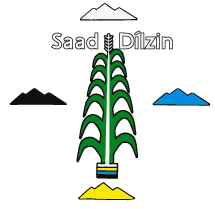Content Questions
Content questions are used to ask the person being addressed to supply missing information so as to make a certain proposition true. For example, Mary ha’át’íí nayiisnii’? (‘What did Mary buy?’) presupposes that Mary bought something, but the identity of the thing she bought is missing; the speaker asks for that information:
| Mary | ha’át’íí | nayiisnii’? |
| Mary | what | 3-3-buy.P |
| What did Mary buy? | ||
Grammarians sometimes refer to English content questions as WH-questions, because these questions contain the wh (or h…w) words who, what, when, where, how, or why. The Navajo counterparts to most of these words begin with h, so they are often called h-words (but díkwíí is also a content question word). The h-words are underlined in the example above and those below:
| Díkwíí | lá | ninááhai? |
| how.many | Q | 2-winter |
| How old are you? | ||
| Háágóósh | díníyá? |
| where-to-Q | 2-go.I |
| Where are you going? | |
| Ha’át’éegoshą’ | t’áadoo | díníyáa | da? |
| why-Q | neg | 2-go.P | neg |
| Why didn’t you go? | |||
There are three question particles that appear optionally in content questions; these are present in examples (2), (3), and (4), shown in bold and glossed with Q, but there is no particle in (1). In English, words and phrases are emphasized by stressing them. In Navajo, the emphasis is generally carried out by adding a particle after the constituent that is being emphasized. The question particles -sh and lá are used to focus an item in Navajo content questions; -shą’ indicates a topic. When question particles appear, they frequently appear just after the h-word or cliticize to it, although this is not a requirement. In the example below, ńléí’asdzą́ą́ sání (‘old woman’) is the topic and bears the enclitic -shą’, while the h-expression follows it:
| Ńléí | ’asdzą́ą́ | sáníshą’ | háí | ’át’į́? |
| there | woman | old-Q | what | 3-be.N |
| Who’s that old lady over there? | ||||
Finally, note that the content question enclitic -sh is not the same as the yes/no question enclitic -ísh.




